Toulon
Type of resources
Available actions
Topics
INSPIRE themes
Keywords
Contact for the resource
Provided by
Years
Formats
Representation types
Update frequencies
status
Scale
Resolution
-
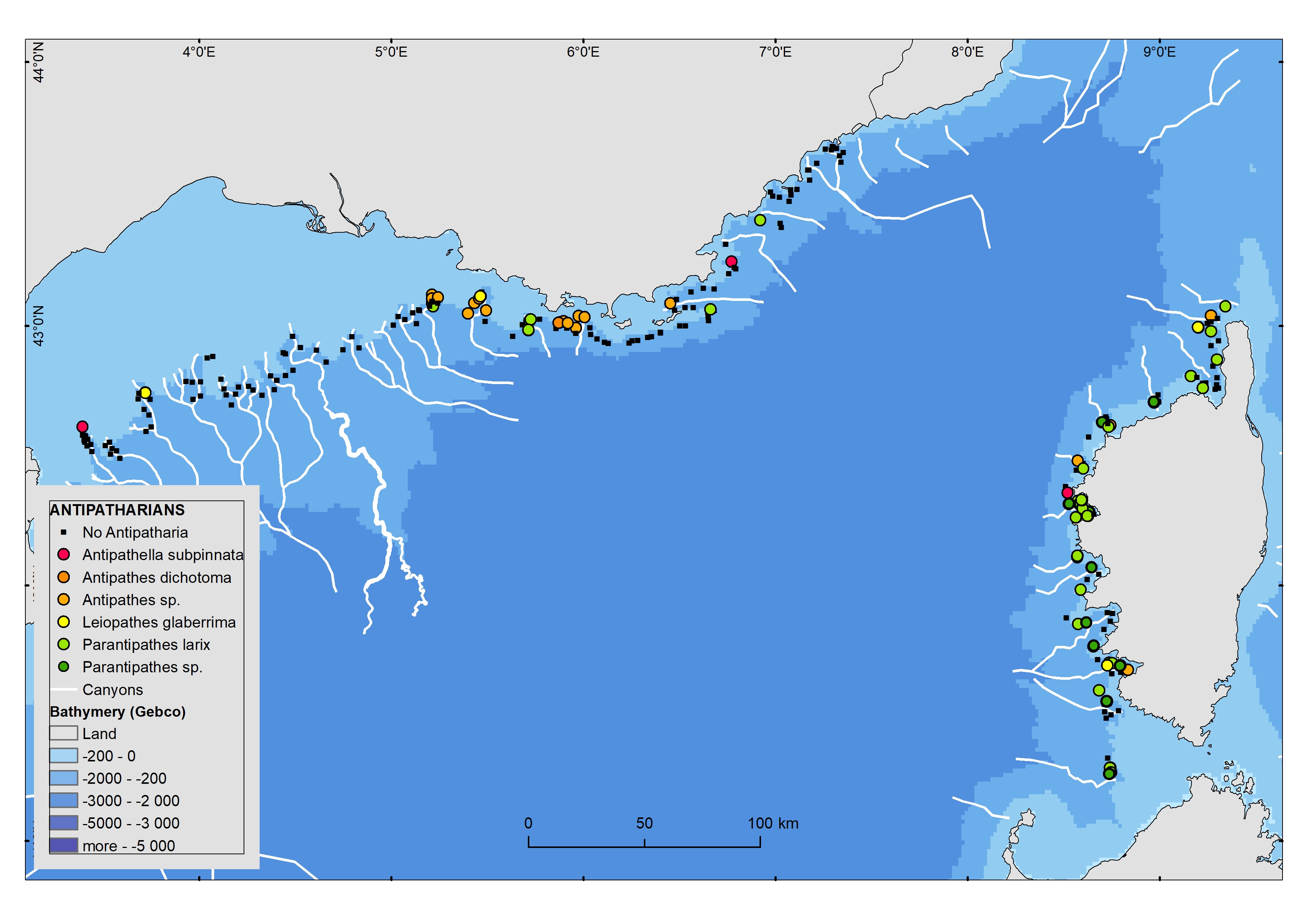
Data were extracted from videos recorded during MEDSEACAN_2009 and CORSEACAN_2010 cruises operated by Comex (Aamp funding). Underwater vehicles were either Achille ROV or Remora submersible. Video analyses were realized by Ifremer and GIS posidonie.
-

Data were extracted from videos recorded during MEDSEACAN_2009 and CORSEACAN_2010 cruises operated by Comex (Aamp funding). Underwater vehicles were either Achille ROV or Remora submersible. Video analyses were realized by Ifremer and GIS posidonie.
-
Distribution des gorgonaires Viminella flagellum observées pendant la campagne Videocor1 dans le canyon de Cassidaigne (L'Europe 2017, H-ROV Ariane). Données liées à la publication Fabri et al., 2019. https://doi.org/10.1016/j.pocean.2019.102172
-
Distribution des gorgonaires Callogorgia verticillata observées pendant la campagne VIDEOCOR_2017 dans le canyon de Cassidaigne (L'Europe 2017, H-ROV Ariane). Données liées à la publication Fabri et al., 2019. https://doi.org/10.1016/j.pocean.2019.102172
-
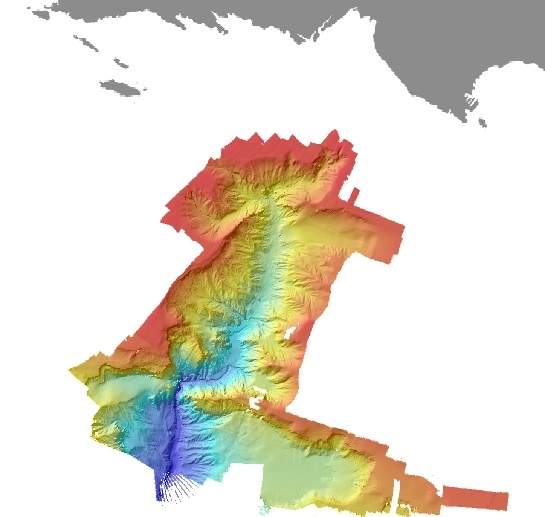
Bathymétrie du canyon de Cassidaigne (campagne ESSROV 2010, 2010). Les données ont été acquises par le sondeur multifaisceau Reson Seabat EM7150 du N/O Pourquoi Pas?, lors de la campagne ESSROV 2010. Ce Modèle Numérique de Terrain est disponible à deux résolutions différentes : 10 et 20 mètres (WGS84, projection Mercator latitude 42°N). Rapport de traitement : Breton Cécile (2012). Canyon de Cassidaigne. Traitement des données de la campagne ESSROV_2010. Référence bibliographique : Fabri, M.C., Bargain, A., Pairaud, I., Pedel, L., & Taupier-Letage, I. (2017) Cold-water coral ecosystems in Cassidaigne Canyon: An assessment of their environmental living conditions. Deep Sea Research Part II: Topical Studies in Oceanography, 137, 436-453. https://doi.org/10.1016/j.dsr2.2016.06.006 Description de la campagne : SIMEONI Patrick (2010) ESSROV 2010 cruise, RV Pourquoi pas ?, https://doi.org/10.17600/10030090
-

Cette étude constitue un état des lieux des biocénoses de la rade de Toulon, de la pointe de l'Eperon au cap de Carqueiranne, dans la tranche bathymétrique comprise entre la surface et 50m, couvrant un espace marin de quelques 45 km².
-
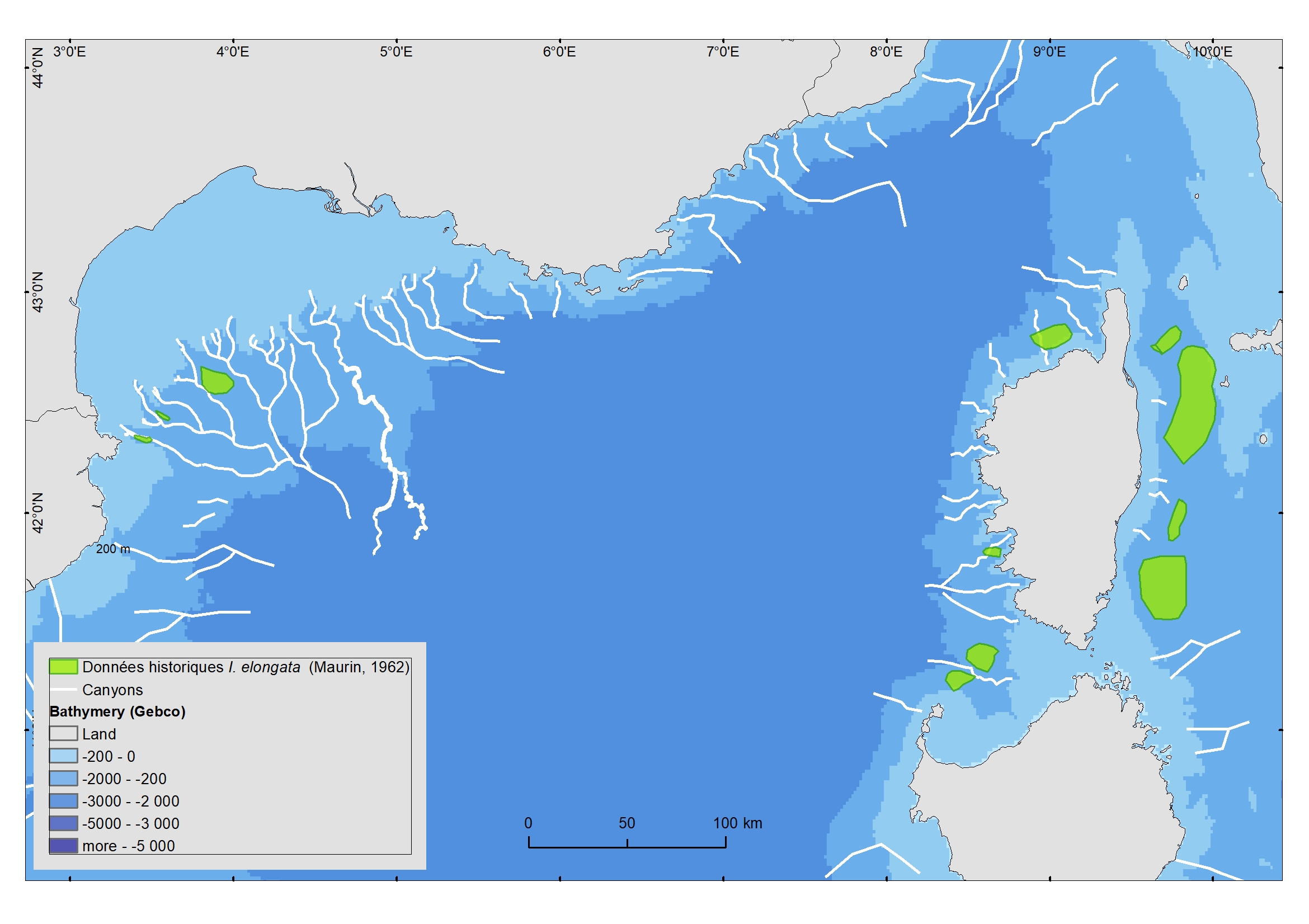
The distribution of the Vulnerable Marine Ecosystem Isidella elongata (Alcyonacea) was digitalized from a document edited in 1962 (Maurin, 1962).
-
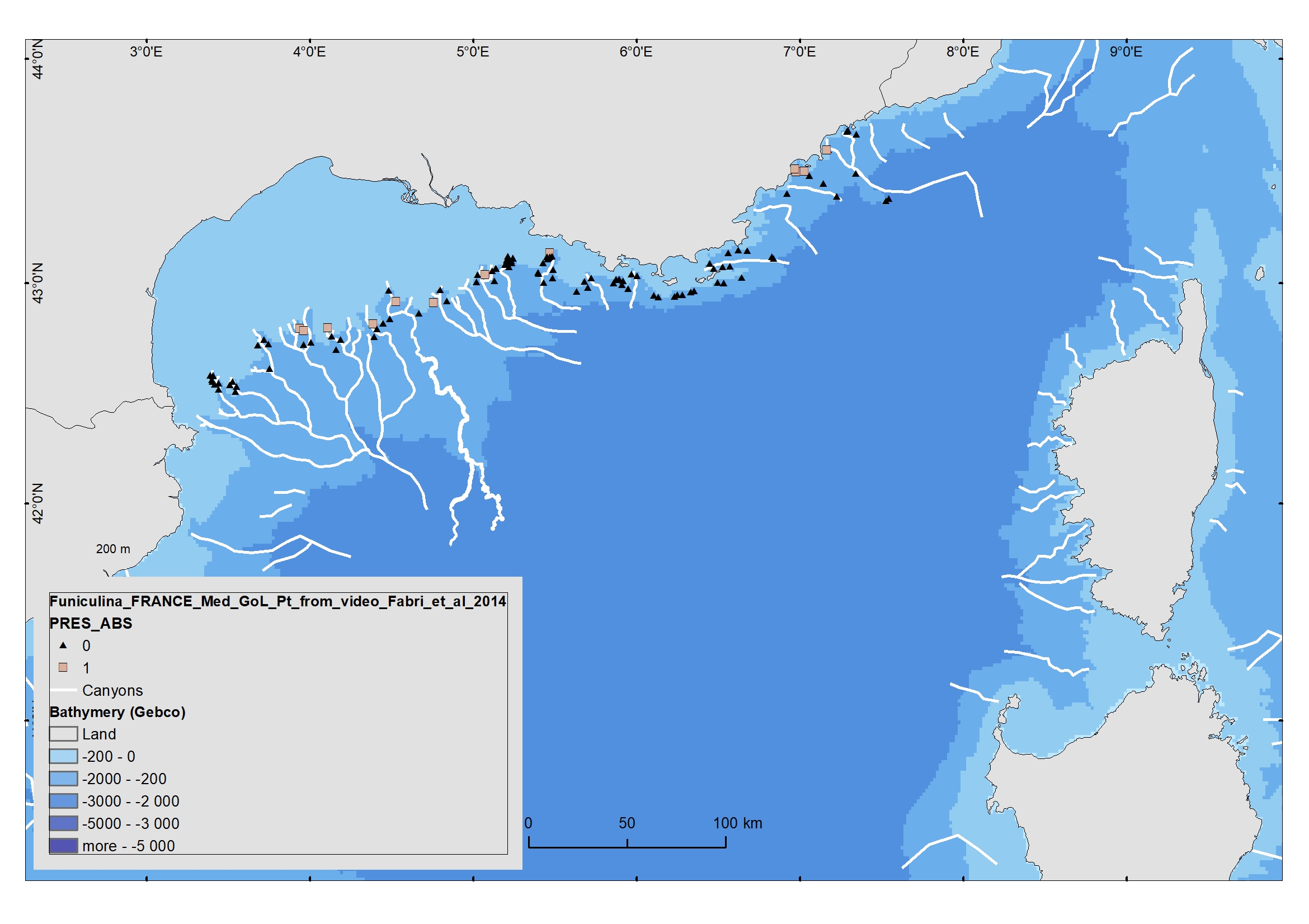
Soft mud facies with Funiculina quadrangularis is an essential habitat for certain crustacean species (Parapenaeus longirostris and Nephrops norvegicus). These habitats are potentially vulnerable as they are targeted by fisheries. These VME fauna seem to have been swept away by repeated trawling. Vulnerable Marine Ecosystems (VME) in the deep Mediterranean Sea have been identified by the General Fisheries Commission for the Mediterranean as consisting of communities of Scleractinia (Lophelia pertusa and Madrepora oculata), Pennatulacea (Funiculina quadrangularis) and Alcyonacea (Isidella elongata). This dataset concerns video data recorded in the heads of French Mediterranean canyons. Quantitative observations were extracted from 101 video films recorded during the MEDSEACAN cruise in 2009 (Aamp/Comex), in addition to 12 Ifremer dives. Species recognized in the video films were recorded from 180 to 700 m depth, and were mapped using GIS. Funiculina quadrangularis was rarely observed, being confined for the most part to the Marti canyon (Hérault). This dataset is linked to the pulication Fabri et al, 2014. https://doi.org/10.1016/j.dsr2.2013.06.016
-
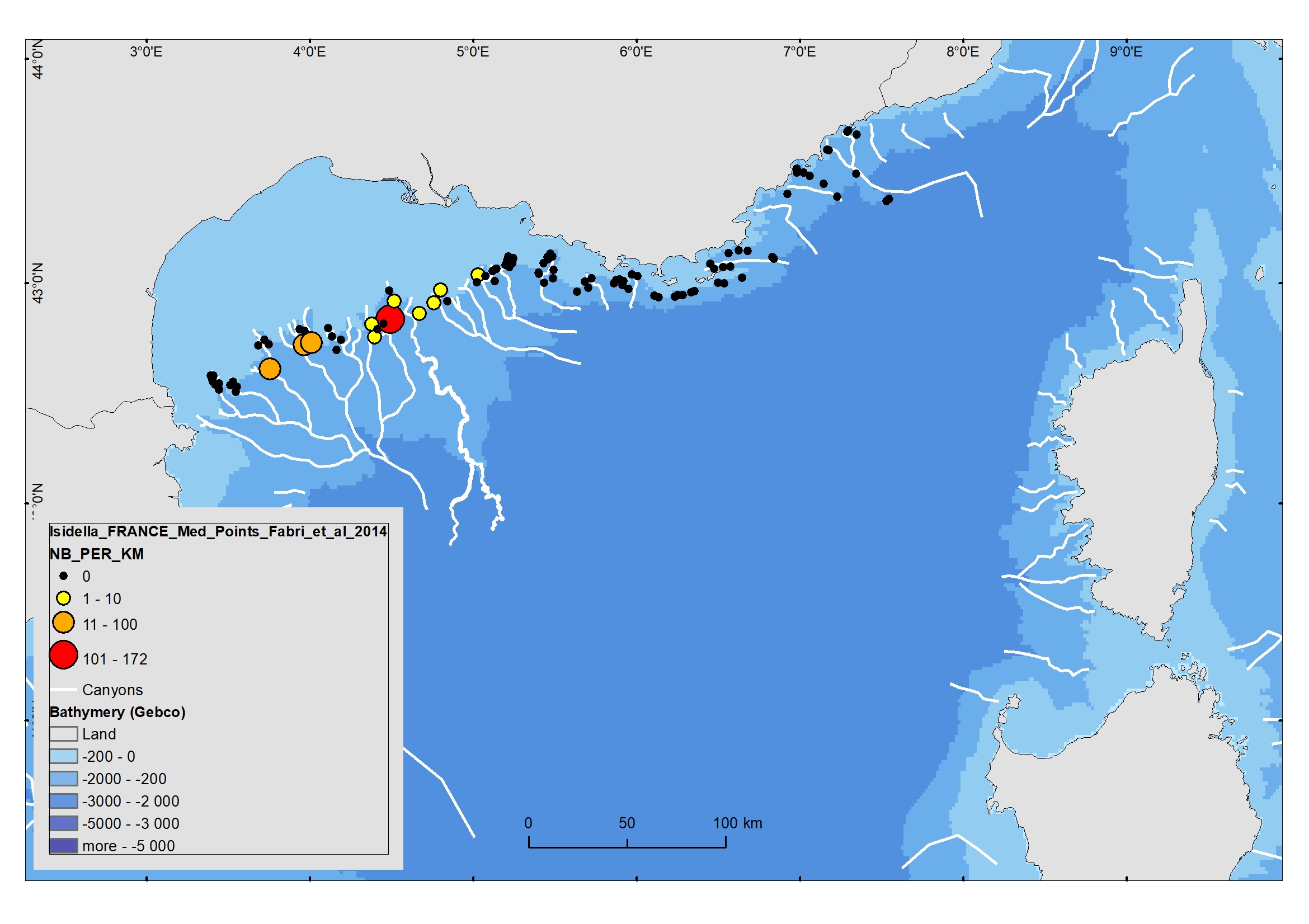
Compact mud facies with Isidella elongata is a relevant habitat for red shrimps (Aristeus antennatus and Aristaeomorpha foliacea). These habitats are potentially vulnerable as they are targeted by fisheries.These VME fauna seem to have been swept away by repeated trawling. Vulnerable Marine Ecosystems (VME) in the deep Mediterranean Sea have been identified by the General Fisheries Commission for the Mediterranean as consisting of communities of Scleractinia (Lophelia pertusa and Madrepora oculata), Pennatulacea (Funiculina quadrangularis) and Alcyonacea (Isidella elongata). This dataset concerns video data recorded in the heads of French Mediterranean canyons. Quantitative observations were extracted from 101 video films recorded during the MEDSEACAN cruise in 2009 (Aamp/Comex), in addition to 12 Ifremer dives. Species recognized in the video films were recorded from 180 to 700 m depth, and were mapped using GIS. Isidella elongata was abundant in three canyons of the Gulf of Lion (Bourcart, Marti, Petit-Rhône). This dataset is linked to the pulication Fabri et al, 2014. https://doi.org/10.1016/j.dsr2.2013.06.016
-
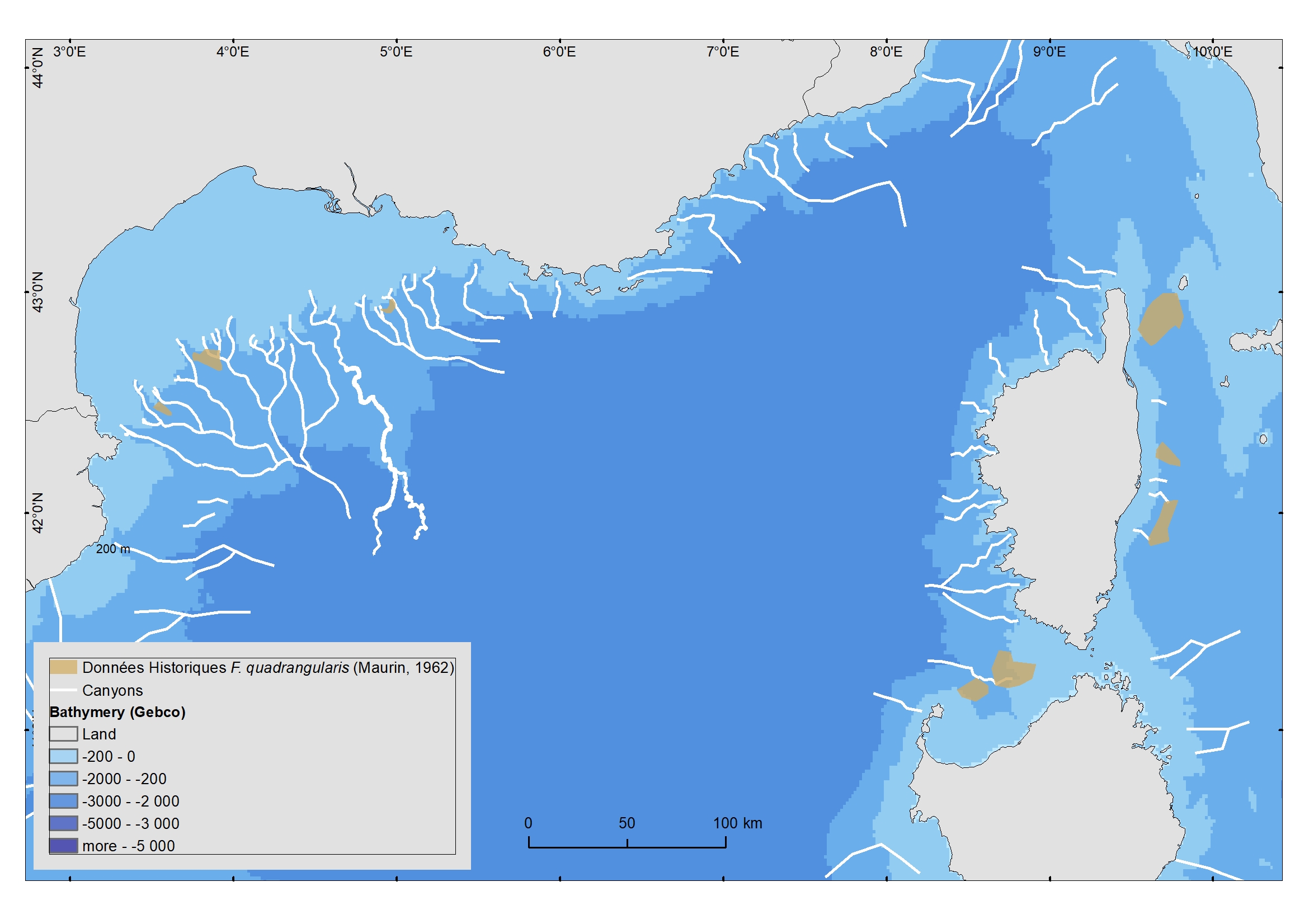
The distribution of the Vulnerable Marine Ecosystem Funiculina quadrangularis (Pennatulacea) was digitalized from a document edited in 1962 (Maurin, 1962).
 Mon GéoSource
Mon GéoSource